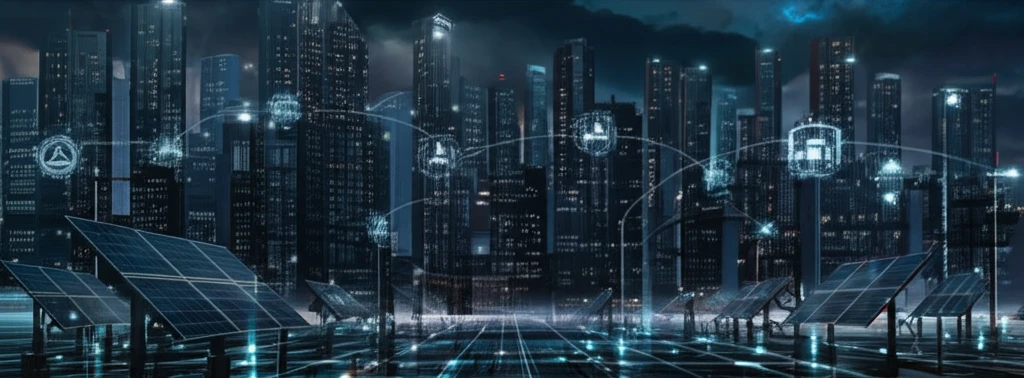
Powering the Future: How Smart Grids are Revolutionizing Energy
"Discover how smart grid technology is paving the way for a sustainable and efficient energy transition, impacting everything from renewable energy integration to consumer empowerment."
The energy landscape is undergoing a seismic shift. Traditional power systems, built on centralized generation and one-way energy flow, are struggling to keep pace with modern demands. As we strive for greater sustainability, security, and efficiency, the need for innovative solutions has never been more critical. Enter smart grids – a transformative technology poised to revolutionize how we generate, distribute, and consume energy.
Smart grids represent a paradigm shift in energy management. By integrating advanced communication, control, and information technologies, these intelligent networks optimize energy flow, enhance grid reliability, and empower consumers to actively participate in the energy ecosystem. From integrating renewable energy sources to enabling real-time demand response, smart grids are paving the way for a cleaner, more resilient energy future.
This article explores the concept of smart grids, delving into their drivers, key components, and potential benefits. We'll examine how these intelligent networks are addressing the challenges of modern energy systems and driving the transition toward a sustainable and efficient energy future. Join us as we uncover the transformative potential of smart grids and their role in shaping the next generation of energy.
The Rise of Smart Grids: Drivers and Technologies

The evolution of power systems is driven by several key factors. The European Union, for instance, set ambitious targets in 2007 to increase environmental sustainability, enhance the security of energy supply, and boost overall competitiveness. These goals translated into binding targets for greenhouse gas reductions, increased renewable energy sources (RES), and improved energy efficiency, bundled under the "20-20-20" package. Many EU countries realized that achieving these targets necessitated a significant contribution from electrical final uses to compensate for slower progress in the transport and thermal sectors.
- Advanced Metering Infrastructure (AMI): Enables real-time monitoring and management of energy consumption.
- Smart Sensors and Controls: Provides granular control over the grid.
- Communication Networks: Forms the backbone for data exchange and coordination.
- Energy Storage Systems: Help balance supply and demand.
Looking Ahead: The Future of Smart Grids
The transition to smart grids is not merely a technological upgrade; it represents a fundamental shift in how we interact with energy. By empowering consumers, integrating renewable sources, and optimizing grid operations, smart grids are paving the way for a more sustainable, resilient, and efficient energy future. As technology continues to advance and regulatory frameworks evolve, the potential of smart grids to transform the energy landscape will only continue to grow, leading us toward a cleaner, more secure, and more equitable energy future for all.
